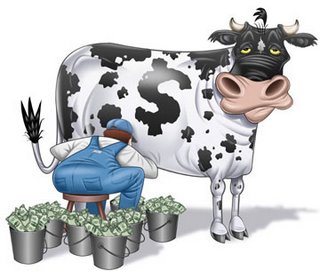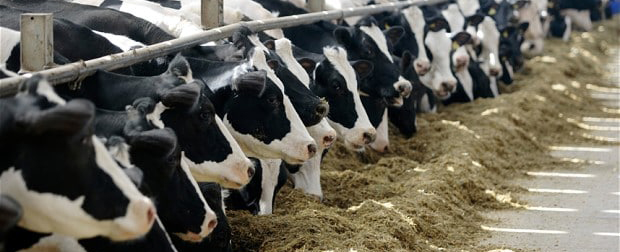
I recently read an article in the “Hoard’s Dairyman” that I think is interesting so I thought I would share some of the highlights with you.
Even in years when low milk price makes it more difficult for the average dairy farm to stay ahead of the bills, there always seems to be a farm down the street that is not only paying the bills, but is also making a profit. Farm Credit East has been analyzing financial data for dairy farms in New England and New York and summarizing it in their annual Northeast Dairy Farm Summary (DFS) for over 30 years. Arguably the most comprehensive analysis of the financial status of dairy farming in the U.S., the DFS has shown us that dairy farm profitability is only minimally influenced by the milk price. The DFS has concluded that, year after year, overall dairy farm management has a much greater impact in determining whether a dairy is profitable in any given year.

Dairy farms that can excel at controlling costs have consistently shown greater profit per cow compared to a dairy that focuses on labor efficiencies or that may receive a better blend price for their milk. Even though milk price does have an impact on profitability, a dairy farm that maintains a low “Net Cost of Production” (NCOP) will have an even greater chance of profitability. There’s also a much closer correlation to profitability with lower NCOP on a dairy than there is to making more milk per cow.
It’s no secret that dairy farms with similar herd sizes and milk production don’t necessarily enjoy the same financial health. Two farms could differ substantially in their net profits, one dairy making nothing while the other makes a sizable profit per cow per year. And the milk price doesn’t matter. In an industry where dairy farmers continue to be “price takers” rather than “price makers” managing costs becomes an integral part of every production on a dairy.
DFS indicated that, of the 122 dairies that were in the top quartile, the most profitable were dairies that had the most fiscally conservative management style, or tight with the buck! These dairies can be credited with paying attention to detail and managing the things that can be controlled with management.
The DFS does show that larger herds are consistently more profitable over all sizes of dairies in any given year. It’s becoming increasingly difficult for mid-size herds to remain profitable. This suggests that if dairy farmers are considering expanding their herd size, they must go big so as to attain economies of scale that are less achievable with mid-range herds.

Granted, in years with higher prices, there are fewer farms losing money. However, going forward in this industry, strive for a management strategy focused on fiscal conservation. And while there’s no magic number as to what the debt per cow should be on any one dairy farm, know the limit of debt that can be tolerated and do not let it get out of hand. In the current global economy, U.S. dairy farmers have no choice but to compete with lower-priced milk. Maintaining profitability on a dairy farm will require constant monitoring of production costs rather than waiting for that occasional year when the price shoots up.
This study comes from the east coast where dairy sizes are drastically reduced, but the main point from this article is that good management goes a long way in the dairy business. AZDHIA offers many managing tools. Milk production information is still the cornerstone of good dairy management, from daily weights to predicted lactation figures. Find the cows that aren’t pulling their weight in the milking string. Monitor milk production peaks and persistency in lactation curves. Discover this information through graphs that show individual cows’ and the herd’s trends over time. Plus, find out how management changes have influenced cow and herd productivity.
Milk components help reveal metabolic problems in individual cows. Transition cows can have a level of risk for ketosis, displaced abomasums and fatty liver disease. Discover these trends quickly and early to prevent these diseases, rather than trying to treat them. DHI records help you generate quick lists for breeding, drying off and calving.
Monitor bulk tank milk and individual cows’ milk quality through SCC testing. Milk quality premiums hold immediate potential for boosting your milk sales revenue. Several cows contributing to your SCC count can have huge influence on your bulk tank SCC.
DHIA provides information to make profit-enhancing decisions. We would love to be part of your management team!
Merry Christmas from our entire crew!
Tom Blevins